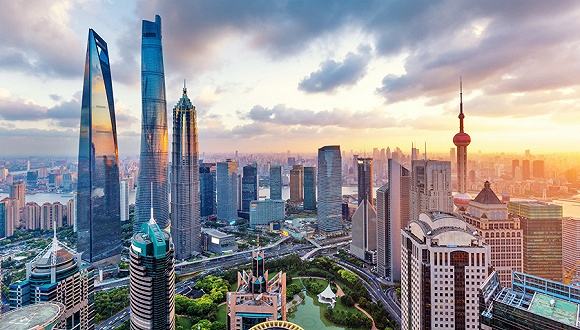Foreign capital utilization shows China’s economy stable

In recent years, China has emerged as a major destination for foreign investment, and its foreign capital utilization continues to improve.
In recent years, China has emerged as a major destination for foreign investment, and its foreign capital utilization continues to improve. The number of new foreign companies grew this year, so did the volume of foreign capital.
The sector structure of foreign capital utilization has been optimized, according to the Ministry of Commerce. The manufacturing industry has reversed its downturn and achieved relatively fast growth. Foreign investment flowing to the manufacturing sector exceeded 100 trillion yuan between January and May, up 12.3 percent year on year.
More sectors have joined in. Pharmaceuticals, electronics as well as medical, communication and other equipment manufacturing took the lead, respectively growing by 10 percent, 55 percent and 450 percent.
Central and western China as well as pilot free trade zones saw constant growth in foreign investment during the period. The scales of foreign investment flowing to China’s central and western parts were about 24 billion yuan and 23 billion yuan respectively. Eleven pilot free trade zones across the country attracted nearly 3,400 new foreign companies combined and their actual use of foreign capital has risen by 14 percent.
In addition, developed economies have started to invest more in China, including Singapore, South Korea, Japan, the United States and the United Kingdom. The increase of foreign capital from South Korea and the United Kingdom exceeded 50 percent. The ASEAN members and the countries along the proposed routes of the “Belt and Road” initiative have expanded their investment in China by nearly 40 percent.
It gives a full picture to examine China’s gains in foreign investment in the global context.
Global foreign direct investment (FDI) fell by almost a quarter in 2017. The total FDI in the world was down to $1.43 trillion, according to a United Nations trade report. The global decline has lasted for two consecutive years whereas China’s foreign capital utilization has climbed to $136 billion, only second to the United States. And the momentum continues to build. Such factors are a testament to China’s improving openness and the positive results yield by the balanced, comprehensive and efficient economic system.
China continues to promote the investment environment to be more fair and open. The State Council released a series of measures on May 30 to encourage the effective use of foreign capital, thus driving quality development of the Chinese economy. The measures touched upon such metrics as convenience, promotion and protection of investment, showing the country’s determination to achieve greater openness and transparency.
These formulations draw on the experience of international practices. Policymakers have learned from the investment policy framework and adopted such aspects as investment liberalization, promotion and protection, Vice Minister of Commerce Wang Shouwen said. The measures also stress the optimization of regional structure and expanding the role of investment destinations like national development zones.
In terms of investment promotion, China will provide tax incentives for foreign investors to establish research and development (R&D) centers with profits made within the country. It also encourages foreign companies to seek mergers and acquisitions while reducing operating costs in China by supporting land intensification and legitimate flexible employment. Local governments are encouraged to double down on investment promotion. For example, they can offer supportive funds or reward foreign investors and talent who make outstanding contributions.
Some foreign investors have found their land and operating costs were rising fast. In response, the document clarified that governments would no longer charge land premiums when manufacturing companies expanded floor space, renovated factories or reorganized internal land use. Furthermore, it supports fixed-term and short-term labor contracts because some processing trade enterprises and R&D centers have special employment requirements. It addresses these companies’ flexible demands and reduces human resource costs, Wang added.
Hao Hongmei is the deputy director of the Foreign Investment Institute under the Ministry of Commerce. She suggested ways to address the deficiencies in the investment environment of China’s central and western regions as well as other structural problems in terms of natural resources and market attractiveness that raise institutional costs for foreign companies. Policies should be tailored to these regions, she said.
The central government will help direct more foreign investment to the middle and western regions. Steps should be taken to improve investment convenience and rein in companies’ institutional trading costs. The government will implement favorable policies concerning taxation, land use and credit loans and construct a cross-border multimodal transportation corridor. Also, neighboring provinces are encouraged to form partnerships under the B&R initiative, said Gao Feng, spokesman of the Ministry of Commerce.
These measures will promote the high-quality development of the Chinese economy. The institutional reforms force governments to shift functions and ensure market strength is the decisive factor in resource allocation. Also, China has shown its strives to build an open economic system in conformity with international practices, said Zhang Monan, a research fellow at the China Center for International Economic Exchanges.
The article was translated from People's Daily.
(edited by MA YUHONG)
